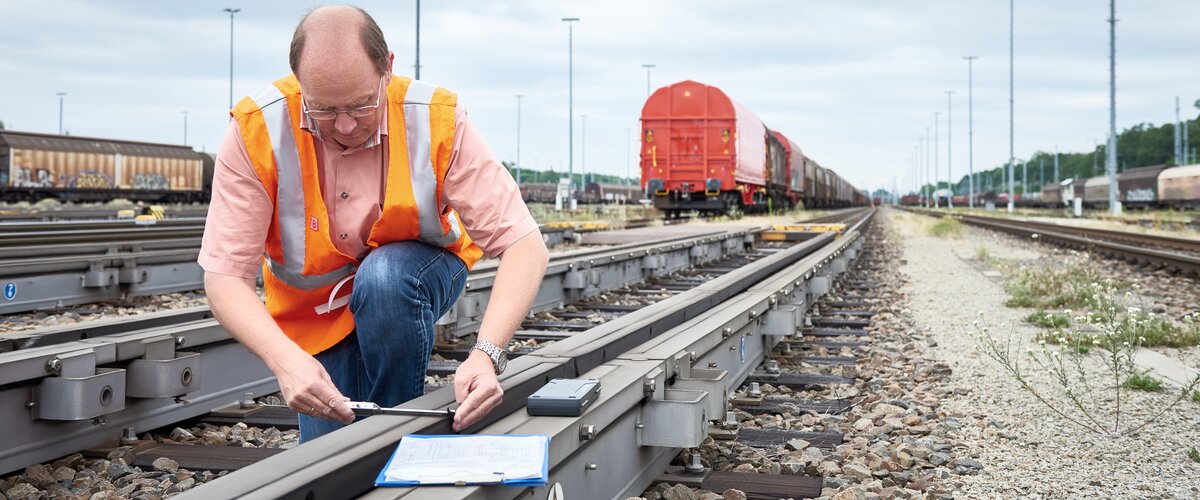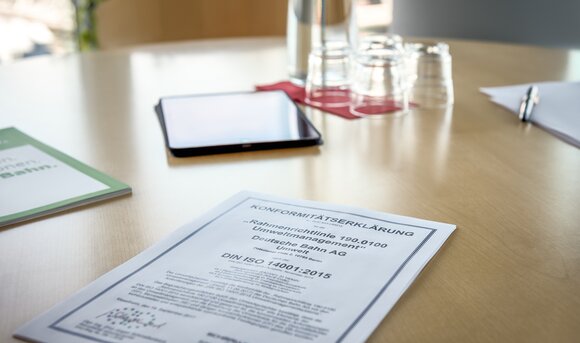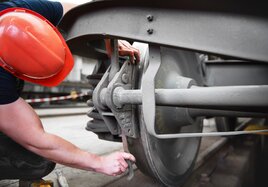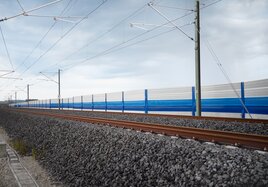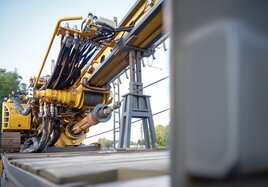Without retarders on the rails, it is virtually impossible to carry out switching and shunting maneuvers at the classification yard. Retarders brake the wagons as they roll down the hump toward the track they are headed for during train formation. That sounds simple enough, but it actually isn't.
In mixed trains, very different types of wagons are coupled together, with properties that vary greatly. Wind direction and wind force also have a considerable impact on the speed and thus the braking behavior of each individual freight wagon. So the retarders have a lot to do. This makes it all the more important that they do their work as quietly as possible, while consuming as little energy as possible. We use innovative technologies to achieve this.
Our Seddin marshaling yard is a prime example. Here, we have installed a total of 28 electro-magnetic retarders, which are both significantly quieter and much more power-efficient than the hydraulic secondary retarders that were used in the past. Each new retarder, together with the energy drive system, consumes only as much energy per day as a 100 watt light bulb in one hour.
We are looking into using this innovative retarder technology at other classification yards too.
